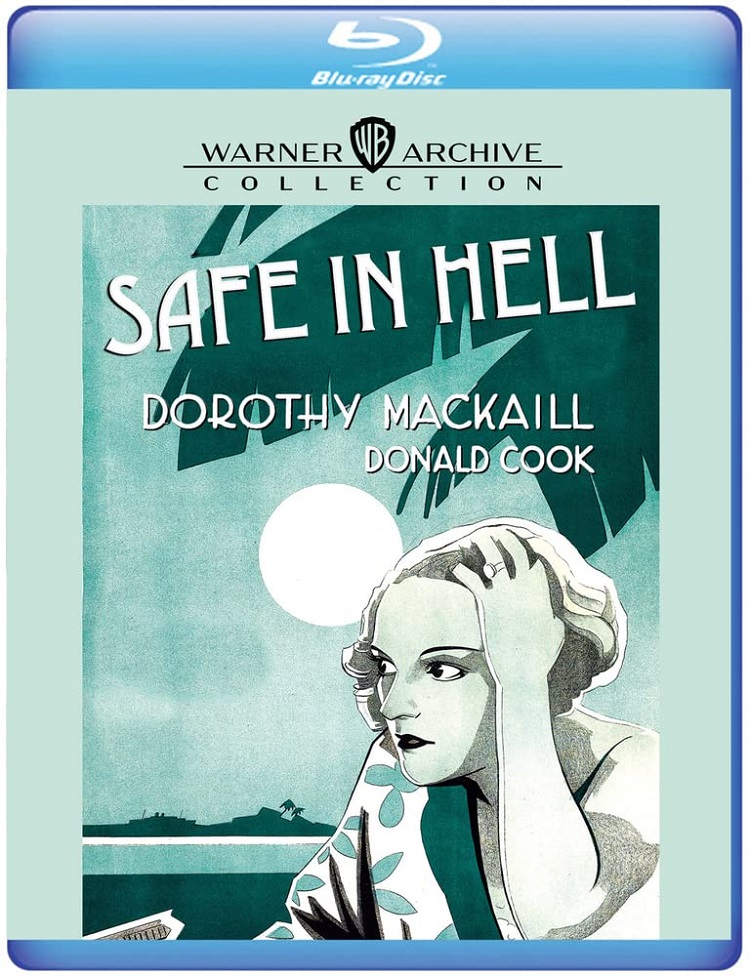
If you do an image search for “pre-Code Hollywood,” you’ll most likely find a picture of an attractive blonde woman sitting on the telephone in a short robe, her legs kicked up revealing the tops of her stockings. The actress is Dorothy Mackaill and the picture is taken from the film Safe in Hell. The image is so sensual, so sexy that it seems shocking to realize the film was made in 1931. Although, in fact, that exact image isn’t in the film, it is a production still – in the film, the camera is much closer, never showing her entire body sprawled out like that. Still, it is quite a scene and that’s one of many things I love about pre-Code Hollywood. For a short period of time – between the adoption of sound in movies and the true enforcement of the Production Code – Hollywood movies were wild. They could get away with anything. Well, almost anything. Well, judging by today’s standards what they actually got away with mostly feels pretty tame, but it is still pretty shocking all things considered. These days what seems more shocking is how much smoking is done on screen, and the blatant sexism. And racism.
That image, of Dorothy Mackaill revealing almost all of her legs, is what begins the film. She’s on the phone with Angie (Cecil Cunningham), her madame, who informs her she’s got a new trick for the evening. The film is more coy about it, it never calls Gilda (that’s Mackail’s character’s name) a prostitute, and never gives details on what she’s supposed to do on her “date” but it is very clear that is what is happening.
The john turns out to be Piet Van Saal (Ralf Harolde), the man responsible for making her a fallen woman. She was his secretary and he all but forced her into regularly having sex with him, but when his wife found out, she kicked Gilda to the curb. When Piet puts the moves on her this time, she fights back, knocking him out cold. When a fire accidentally starts, she leaves him for dead. At the same time, Gilda’s old boyfriend Carl Erickson (Donald Cook) returns from the sea. She tells him what has happened and he smuggles her to a small island without an extradition treaty.
They find a cheap hotel and set her up in a room before he has to sail away once again. The lobby of the hotel is full is skeevy, treacherous men who spend their days waiting for her to come out of her room so they can leer at her and make terrible passes. She promised Carl that she’d always be true to him and so she mostly stays in her room, locked up tight. Eventually, boredom brings her out and she has a night of smoking, drinking, and revelry. She meets Mr. Bruno (Morgan Wallace), the local executioner, who is just as lecherous as the others, but ever more dangerous. She’ll find out how dangerous by the film’s end.
This island, this tropical paradise that she has escaped to, where she is safe from the law, has become a prison, her own personal hell. These men, for the most part, are mostly harmless. They, for the most part, do not try to force themselves upon her. But they are threatening just the same. The film feels very modern in the way it depicts the small and large ways in which men terrorize women.
Dorothy Mackail is marvelous in this. She turns Gilda into an icon. She’s smart and funny, tough but vulnerable. She did what she had to do in order to survive and she’ll do it again, but she also loves her man and is willing to die for her own sense of morality. She’s so good I immediately looked up her other films and added them to my “must-watch” list.
The shocking thing about the film isn’t that early image of Gilda showing so much leg, but rather its humanist view towards Gilda’s situation. It never once looks down at her, while all the time letting us see just how creepy almost every male character is. Shocking still is that the two African American actors in the film (Nina Mae McKinney and Clarence Muse) are the only reputable characters in the entire film. Their roles aren’t large, but they are never bent toward the atypical racial stereotypes found in so many of the films at the time.
The film takes a turn towards the melodramatic in the third act which also moves it towards a bit of moralizing that was completely absent in the first half. I didn’t love where it landed, even if I applaud its willingness to end on an extremely downbeat note. Yet it still feels like a revelation. It touches on themes and ideas that would be completely censored just a few years later, and even now are rarely dealt with.
The Warner Archive presents Safe in Hell with a new 4K scan of the only known surviving 35mm nitrate print, and it looks spectacular considering it is over 90 years old. Extras include the film’s trailer and three Vitaphone shorts. The shorts are Pat O’Brien in “Times Square” in which Pat O’Brien plays a gangster who reforms over a girl; George Jessel and His Russian Art Choir, which sees the titular Jessel and his choir perform a song; and Dumb Patrol, an early cartoon featuring some silly animals dodging WWI era bombs.